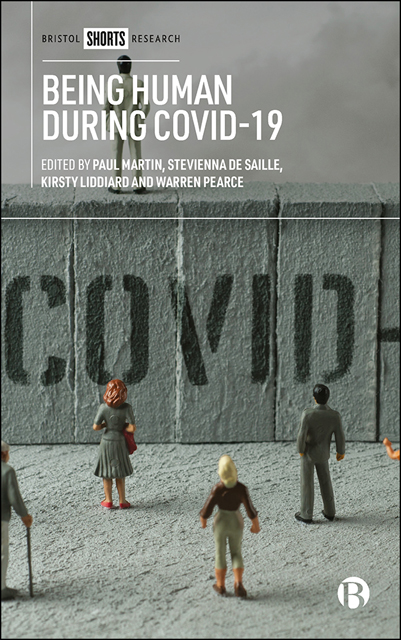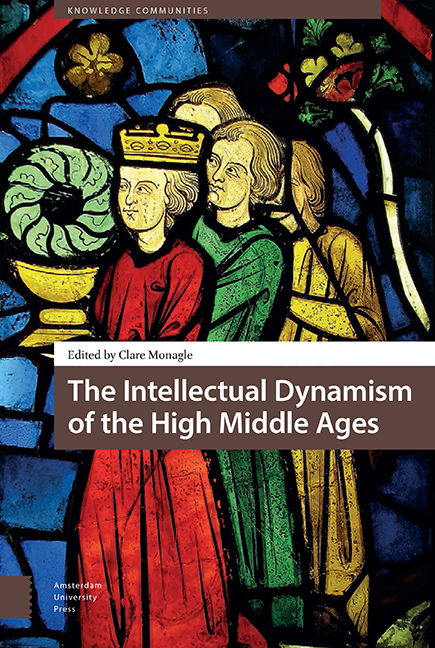Refine search
Actions for selected content:
12661 results in History of science
Index
-
- Book:
- Expertise in Crisis
- Published by:
- Bristol University Press
- Published online:
- 18 January 2024
- Print publication:
- 31 January 2023, pp 108-114
-
- Chapter
- Export citation

Being Human during COVID-19
-
- Published by:
- Bristol University Press
- Published online:
- 13 October 2022
- Print publication:
- 26 April 2022

The Intellectual Dynamism of the High Middle Ages
-
- Published by:
- Amsterdam University Press
- Published online:
- 16 July 2022
- Print publication:
- 21 September 2021
-
- Book
- Export citation

Shipwreck Hauntography
- Underwater Ruins and the Uncanny
-
- Published by:
- Amsterdam University Press
- Published online:
- 16 July 2022
- Print publication:
- 16 September 2021
-
- Book
- Export citation
References
-
- Book:
- After Science and Religion
- Published online:
- 05 May 2022
- Print publication:
- 19 May 2022, pp 325-347
-
- Chapter
- Export citation
Chapter 2 - The Nineteenth-Century Origins of the Problem
- from Part I - Modern Historians on ‘Science’ and ‘Religion’
-
-
- Book:
- After Science and Religion
- Published online:
- 05 May 2022
- Print publication:
- 19 May 2022, pp 35-58
-
- Chapter
- Export citation
Part I - Modern Historians on ‘Science’ and ‘Religion’
-
- Book:
- After Science and Religion
- Published online:
- 05 May 2022
- Print publication:
- 19 May 2022, pp 13-58
-
- Chapter
- Export citation
Chapter 9 - Consciousness, Intention, and Final Causation
- from Part III - Philosophical Problems with ‘Science’ and ‘Religion’
-
-
- Book:
- After Science and Religion
- Published online:
- 05 May 2022
- Print publication:
- 19 May 2022, pp 219-231
-
- Chapter
- Export citation
Reviews
-
- Book:
- After Science and Religion
- Published online:
- 05 May 2022
- Print publication:
- 19 May 2022, pp ii-ii
-
- Chapter
- Export citation
Chapter 11 - Lessons in the Distant Mirror of Medieval Physics
- from Part IV - Before Science and Religion
-
-
- Book:
- After Science and Religion
- Published online:
- 05 May 2022
- Print publication:
- 19 May 2022, pp 259-281
-
- Chapter
- Export citation
Chapter 5 - Science, Beauty and the Creative Word
- from Part II - Beyond ‘Science and Religion’
-
-
- Book:
- After Science and Religion
- Published online:
- 05 May 2022
- Print publication:
- 19 May 2022, pp 144-154
-
- Chapter
- Export citation
Chapter 3 - Science and Theology
- from Part II - Beyond ‘Science and Religion’
-
-
- Book:
- After Science and Religion
- Published online:
- 05 May 2022
- Print publication:
- 19 May 2022, pp 61-74
-
- Chapter
- Export citation
Copyright page
-
- Book:
- After Science and Religion
- Published online:
- 05 May 2022
- Print publication:
- 19 May 2022, pp iv-iv
-
- Chapter
- Export citation
Contributors
-
- Book:
- After Science and Religion
- Published online:
- 05 May 2022
- Print publication:
- 19 May 2022, pp vii-x
-
- Chapter
- Export citation
Contents
-
- Book:
- After Science and Religion
- Published online:
- 05 May 2022
- Print publication:
- 19 May 2022, pp v-vi
-
- Chapter
- Export citation
Acknowledgements
-
- Book:
- After Science and Religion
- Published online:
- 05 May 2022
- Print publication:
- 19 May 2022, pp xi-xii
-
- Chapter
- Export citation
Index
-
- Book:
- After Science and Religion
- Published online:
- 05 May 2022
- Print publication:
- 19 May 2022, pp 348-356
-
- Chapter
- Export citation
Part III - Philosophical Problems with ‘Science’ and ‘Religion’
-
- Book:
- After Science and Religion
- Published online:
- 05 May 2022
- Print publication:
- 19 May 2022, pp 217-256
-
- Chapter
- Export citation
Chapter 8 - Understanding Our Knowing
- from Part II - Beyond ‘Science and Religion’
-
-
- Book:
- After Science and Religion
- Published online:
- 05 May 2022
- Print publication:
- 19 May 2022, pp 201-216
-
- Chapter
- Export citation
Chapter 1 - Science and Religion as Historical Traditions
- from Part I - Modern Historians on ‘Science’ and ‘Religion’
-
-
- Book:
- After Science and Religion
- Published online:
- 05 May 2022
- Print publication:
- 19 May 2022, pp 15-34
-
- Chapter
- Export citation
